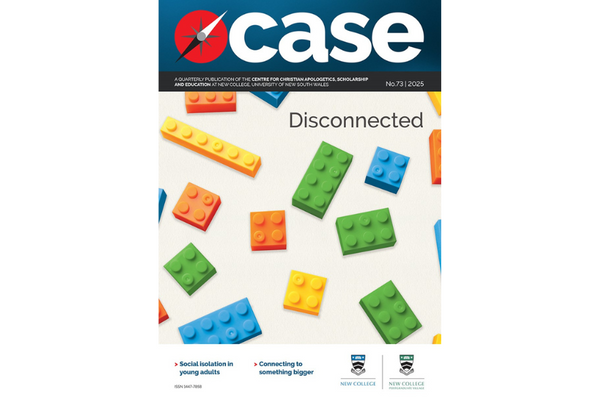The Household: Informal Order Around the Hearth

The Household: Informal Order Around the Hearth
Robert C. Ellickson, Princeton: Princeton University Press, 2008, 272pp
What immediately comes to mind when the word ‘household’ is mentioned? Family? Marriage? Housework? These were certainly some of the connotations that came to mind when I picked up Ellickson’s The Household: Informal Order Around the Hearth.
(Princeton University Press, 2008). But on the very first page, Ellickson aptly distinguishes between family/marriage and the household. The traditional focus on marital and familial relationships has distracted us from a thorough exploration into the norms and practices that characterise the household. The Household is a fascinating look at the domestic interactions that take place in the home.
It focuses on the United States but has implications for other Western nations like Australia. Ellickson uses both property law and the economic concept of ‘transaction costs’ as a methodological framework for explaining the way owners and occupiers relate in the context of the home. This is not to downplay the impact of cultural variables, but to highlight some universal patterns that emerge from a legal and economic perspective.
In The Household, Ellickson advocates continuing support for the foundational liberal principles that underpin households in the West. He regularly reminds his audience that the household unpacked in the book is one that can only operate within a liberal context. For adults to be able to form and dissolve households, they require the three basic liberal tenets: freedom to contract, freedom of exit, and private property. These tenets also underpin Australia’s legal system.
Freedom to contract is in essence what allows households to form. Consenting adults are given the freedom to decide who they wish to live with etc; the Government does not intervene (or does so very minimally) in these choices.
Freedom of exit, according to Ellickson, is an important check on household members’ behaviour in the household. It empowers each household member to leave the household if they so wish. This forms an implied threat to other household members and acts as a kind of bargaining chip. This right has only relatively recently been extended to women, both formally and effectively. It was only with the genuine possibility of social and economic survival outside the household becoming available that women really acquired the freedom to exit.
Ellickson assumes that the household member is willing and able to exercise their liberal rights. Indeed, for household norms to be effectively instigated and maintained, there needs to be some kind of belief by each household member that each other household member will exercise their freedom to exit the household.
Private property has an important role to play in the household. The ability to exclude others as well as the potential for investment return encourages people to provide equity capital to purchase property. Indeed, property owners demonstrate a concern about the condition and care of the property that non-owners do not share. What Ellickson describes is the classic problem named the ‘tragedy of the commons’. The tragedy of the commons occurs where there is no private ownership of an object, for example land, but there are many users. The problem is that each user has no interest in maintaining or protecting the object because it is not their property. The only interest they have is to maximise their own gain.
Ellickson offers a very helpful historical overview of households, from which I wish to highlight three trends. Firstly, the trend in developed countries is that the richer we get, the smaller our households become (p35). Implications from this may be that we may choose to have less children and become less community-minded. Indeed, the second, related trend is that the greater the development, the less the number of families who care for older family members (p38). This will not come as a surprise to readers. The final pattern worth noting is that home ownership tends to lead to people becoming more politically and economically conservative (p91).
The big picture that arises out of home ownership is that it has a tendency to create inward, self-absorbed thinking and an unwillingness to use our personal assets to serve and love others. The challenge for Christian homeowners is to be more hospitable and increase opportunities to fellowship using their homes. Not to become isolated and cut off from our broader Christian family but to be more involved in each others’ lives and have more opportunities to love and serve others.
In further support of the paradigm of private ownership, Ellickson investigates alternative models in the form of “unconventional households”. In chapter five, Ellickson explores how intentional communities have been established based on forms of communal ownership and communal living arrangements. These intentional communities vary between religious and secular worldviews. The solidarity created by common religious beliefs affords religious intentional communities a better chance of creating a longer term shared living arrangement than communities of a secular nature (p54). But in considering intentional communities overall, Ellickson concludes: ‘even a weakly communal blueprint for dwelling and dining, such as co-housing, tends to founder on that most mundane of shoals: transaction costs’ (p59).
Transaction costs refer to the ancillary costs involved in the exchange of goods and services. For example, to purchase a car will involve time and energy in investigating available cars, REVS checks, test driving cars, transportation, delivery and other considerations. These are transaction costs, in addition to the actual costs of the good or service. From a Christian perspective, one might also conclude that the innate sinfulness of humans makes communal living a very vulnerable proposition. But this is not necessarily inconsistent with Ellickson’s observations.
One of Ellickson’s key ideas in The Household is that small, often kin-based households of ‘intimates’ is the most efficient household structuring for shared living. Having a small number of co- occupants reduces the costs of decision- making and allows for an efficient exchange of services within the household. Ellickson’s sociological model of the household assumes that the household member is a rational, self-interested player who adequately understands economic exchange, but not in technical detail. Why the household appears to work (generally speaking) is that the informal practices or as Ellickson calls them, ‘homeways’, enable the household members to efficiently coordinate their activities in a way that minimises the transactional costs and maximises the shared gains of the household. It is assumed that the household member is rational enough to understand that consideration for the needs of their other household members is in their best interest as it maximises the shared gains for the household.
In addition, Ellickson asserts that it is not appropriate for the law to become involved in the intimate workings of the household (p135). It is far more beneficial and efficient for informal modes of exchange to take place, which are enforced internally, rather than the objective arm of the law intervening.
Informal exchange of gifts is one of the key ways by which the household maximises efficiencies and considers the interests of each of the members. Money is not the good that is exchanged. In most cases, according to Ellickson, it is the exchange of services for like services, or the exchange of complimentary services. For example, an informal exchange of gifts in the household may involve Anthony providing the majority of the cooking and cleaning services, whilst David reciprocates by managing the finances for the home as well as the maintenance for the property. This arrangement is efficient and mutually beneficial because each has better abilities in their specialised areas of services and each provides equal but different services to the other. Indeed, I was reminded of the ideal functioning of the body of Christ in 1 Corinthians 12, where the church is described as having many parts, each of which serves the body as a whole.
The Christian perspective differs from that of Ellickson. Indeed, it comes down to the difference between descriptive truth and normative truth. Ellickson has aptly described the reality of what happens in the average household in the United States. The Christian perspective to some extent agrees with the diagnosis of Ellickson in relation to the household. The self-interestedness that is so integral to the constitution of the household member in economic terms, the Bible would suggest, derives from humanity’s sinful nature. It comes as no surprise that household members are motivated by self-gain as all have sinned and turned aside from God;1 indeed, in the last days we are to expect to see ‘lovers of self’.2
But the Bible does not stop at confirming the self-orientation of the human race. It calls for people to return to God and live in a way that is pleasing to him. Thus it offers a normative truth; that is, what should be, not what is. There is no doubt that Christians will act selfishly and sinfully in the household. This is the descriptive reality of life pre-heaven. But Christians are being transformed by God’s spirit into the likeness of Christ.3 They should be trying, and with God’s help succeeding, to live in a way that imitates Christ. What should this look like? It is the humility, service and self-sacrifice exemplified in Christ coming to earth to die on the cross.4 Christians in the household should be motivated by concern for their other household members; looking for opportunities to love and serve.
Christians living in a liberal democracy, such as Australia, enjoy the same privileges as their fellow Australians, including the liberal foundational rights that Ellickson highlights. But being called to love and service may involve choosing not to exercise legal or other rights. In the context of the household, it will often not be loving to threaten to exercise one’s freedom to exit. In the context of marriage, the Biblical model is not described in terms of rights, but in the language of sacrifice, and submission.5 Indeed, the concept of individual rights seems somewhat at odds with the idea that two people become one body.6
The Christian perspective ultimately differs from the sociological picture painted by Ellickson. While Ellickson’s household member acts in self-interest seeking to minimise the transaction costs of the household, the Christian acts out of love for their other household members. Loving others can certainly cost the individual, but in God’s household, the transaction costs of love and service are not the primary consideration. Reading The Household would benefit Christians in all stages of life as a challenge to thoughtfully consider how to foster loving household environments and how to shape our Christian households to be contrasting lights in an increasingly transaction- and rights-based society.
E N D N O T E S
1 Romans 3:10-12
2 Timothy 3:2
2 Corinthians 3:18
Philippians 2:5-11
Ephesians 5:22-33
Genesis 2
Leave a comment
Comments will be approved before showing up.



